Anubias heterophylla
Scientific name: Anubias heterophylla
Family: Araceae
Maximum size reached under cultivation: 25 - 60 cm (9.84 - 23.62 inch)
014
Recommended pH range: 5.6 - 8
Recommended water hardness: 0 - 18°dGH (0 - 321.43ppm)
0°C 32°F30°C 86°F
Recommended temperature range: 20 - 30 °C (68 - 86°F)
Preferred propagation method: Rhizome
Native to: Africa
Growth rate: Slow
Recommended substrate: Gravel
Lighting requirements: Subdued
Ideal placement in tank: Background
🏷️ Common Names
Anubias heterophylla is commonly known as Congo Anubias.
🌍 Origin
Anubias heterophylla originates from several regions of tropical Africa, including Cameroon, Guinea, Angola, and the Democratic Republic of Congo. In the wild, it thrives along riverbanks and in slow-moving waters, often in partially or fully submerged conditions. Its adaptability to different water parameters makes it a resilient and beginner-friendly plant for aquariums and paludariums.
💡 Lighting Requirements
This species tolerates a wide range of light intensities, from low to moderate. Its natural preference is for subdued lighting, which helps reduce algae growth on leaves. While it grows slowly under any lighting, avoid placing it directly under strong lights. In emersed setups, mist the leaves regularly to prevent drying. For best results, place it in partially shaded areas or under floating/taller plants.
🌱 Propagation
Rhizome division is the easiest and most effective propagation method. Cut the rhizome into sections with at least 3 healthy leaves. Avoid burying the rhizome in the substrate to prevent rot. Attach the plant to driftwood or rocks using fishing line or aquarium-safe glue. Over time, the plant will anchor naturally and send out new shoots. Leave adequate space for lateral growth.
⚙️ Difficulty
Very easy. Anubias heterophylla is a robust plant that handles a wide spectrum of pH levels, temperatures, and water hardness. It requires minimal pruning and thrives in both low-tech and high-tech setups. In deeper aquariums, it may develop longer stems, reaching for the surface—adding vertical interest and visual layering.
📦 Categorization
Thanks to its adaptability, this species fits into both Aquatic and Semi-aquatic categories. It grows well fully submerged in aquariums and partially emersed in paludariums or marsh-style setups. It is not considered a marginal plant, but its hardiness allows it to thrive near water edges under high humidity.
📝 Short Description
Anubias heterophylla is one of the tallest species in the Anubias genus, known for its sturdy, lance-shaped leaves. While it grows taller when partially submerged, it can still reach impressive heights when fully submerged in the aquarium. Although the plant may occasionally produce underwater flowers, this is rare. It is sometimes propagated using seeds, though rhizome division is the more common method in aquariums.
One unique feature of Anubias heterophylla is its slow growth rate, which makes it a fantastic addition to aquariums without overwhelming other plants or taking up too much space. However, because of this slow growth, algae may develop on the older leaves over time. This is perfectly normal and can even enhance the plant's natural beauty, but occasional cleaning of the leaves may be necessary to maintain their appearance.
This plant looks stunning when attached to rocks or driftwood, where it will gradually secure itself. To achieve this, you can use fishing line to tie the rhizome to the hardscape until it anchors naturally. Be sure to remove all fishing line once the plant has attached itself, to prevent any harm to fish or other tank inhabitants. Overall, Anubias heterophylla is an excellent choice for aquascapers seeking a low-maintenance, visually appealing plant that adds height and depth to their aquariums.

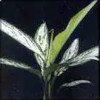 Aglaonema commutatum “Silver Queen”
Aglaonema commutatum “Silver Queen”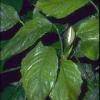 Aglaonema simplex
Aglaonema simplex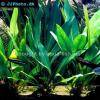 Anubias afzelii
Anubias afzelii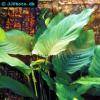 Anubias barteri
Anubias barteri Anubias barteri “Caladiifolia” ‘1705’
Anubias barteri “Caladiifolia” ‘1705’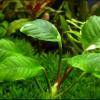 Anubias barteri “Coffeefolia”
Anubias barteri “Coffeefolia”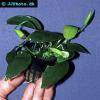 Anubias barteri “Nana”
Anubias barteri “Nana”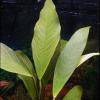 Anubias barteri v. angustifolia
Anubias barteri v. angustifolia Anubias gracilis
Anubias gracilis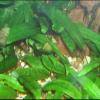 Cryptocoryne affinis
Cryptocoryne affinis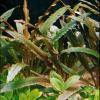 Cryptocoryne albida
Cryptocoryne albida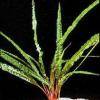 Cryptocoryne balansae
Cryptocoryne balansae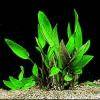 Cryptocoryne becketti
Cryptocoryne becketti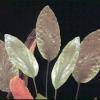 Cryptocoryne blassi
Cryptocoryne blassi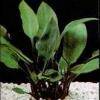 Cryptocoryne ciliata
Cryptocoryne ciliata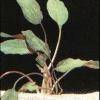 Cryptocoryne cordata
Cryptocoryne cordata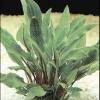 Cryptocoryne lutea
Cryptocoryne lutea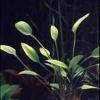 Cryptocoryne nevillii
Cryptocoryne nevillii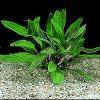 Cryptocoryne petchii
Cryptocoryne petchii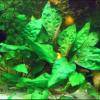 Cryptocoryne pontederiifolia
Cryptocoryne pontederiifolia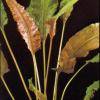 Cryptocoryne wendtii
Cryptocoryne wendtii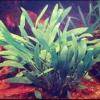 Cryptocoryne willisii
Cryptocoryne willisii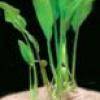 Lagenandra ovata
Lagenandra ovata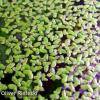 Lemna minor
Lemna minor Pistia stratiotes
Pistia stratiotes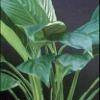 Spathiphyllum petite
Spathiphyllum petite Spathiphyllum wallisii
Spathiphyllum wallisii